Studies are showing that deer antler velvet has a long, impressive, and rapidly-growing list of benefits. Integrative veterinarian Dr. Julie Buzby shares the science behind deer antler velvet, and why it’s a unique ingredient in veterinary and human nutraceuticals. This research article, which is a departure from her award-winning blog posts, was featured in Innovative Vet Care Journal (volume 11, issue 2). If you’re searching for the science, facts, and history behind deer antler velvet, this article is your most comprehensive source.
In 2001, an independent research study to evaluate market opportunities for the Australian deer industry concluded that although “the pet markets in Europe, North America, and Australia for velvet antler products have received little attention, there is a slowly growing recognition of the market potential, particularly for velvet antler”(1).
The future is here. Integrative veterinarians owe it to their clients to be educated on the uses of deer antler velvet in practice, both to address client questions and because of the potential benefits for their patients. (As an aside, if you need general education on deer velvet supplements specifically for dogs, please read the author’s blog posts on deer velvet supplement for dogs and the best supplement for joint pain in dogs.)
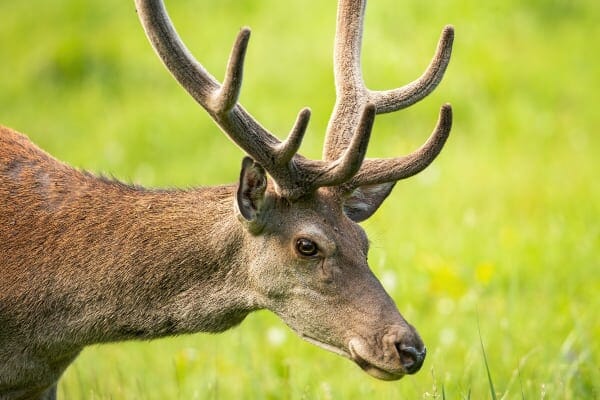
What is deer antler velvet?
Deer antler velvet has been used in Chinese medical formulations for over 2000 years for its nourishing, tonic, and hemopoietic effects. The term antler velvet is perhaps misleading. It does not refer to the velvety furred skin covering the antlers during the growth season.
The term “velvet” denotes the antler’s immature stage of growth. The entire structure of the antler—which, in the velvet phase, consists of a cartilaginous core covered by connective tissue and skin—is harvested for use.(2)
If not harvested, the antler will go on to harden through rapid ossification and eventually be shed after breeding season.(3) This cycle of antler development leading to antler-drop repeats annually.
Save 10% on Encore Mobility™ Joint Supplement for Dogs
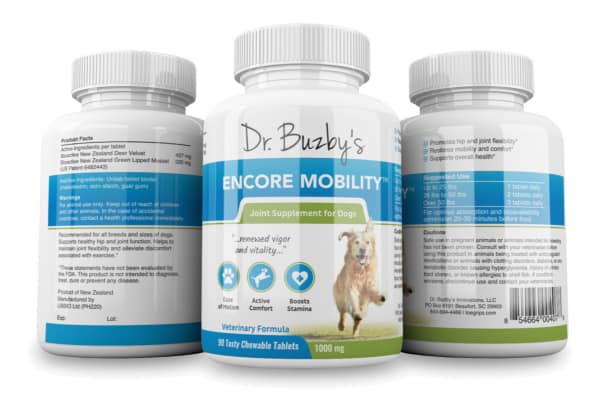
Give your dog more good days.
Use promo code HAPPY to save 10% on Encore Mobility.
How is deer antler velvet harvested?
Antler from two species of deer—sika deer (Cervus nippon) and red deer (Cervus elaphus)—are used in the Chinese, Japanese, and Korean pharmacopoeias.(4,5) Ethical concerns are often voiced about antler harvesting. It’s important for veterinarians using and recommending supplements containing deer antler velvet to understand how it is harvested.
Deer antler velvet is soft vascularized and innervated tissue in the velvet stage.(2) But administration of lidocaine, typically in the form of a ring block, has been shown to be a reliable and effective form of analgesia for the removal,(6) which takes about 30 seconds, after which the deer resume normal activity.(7)
Strictest standards for harvesting
New Zealand and Australia have the strictest standards governing harvesting deer antler velvet. The antler velvet industry in New Zealand is governed by the National Velvetting Standards Body (NVSB), which is a committee of veterinarians and deer farmer representatives whose mission is to implement recommendations and standards for the welfare of deer during the removal of their antlers.(8) Handling of the deer for collection is supervised and monitored by a veterinarian trained and licensed by the NVSB.
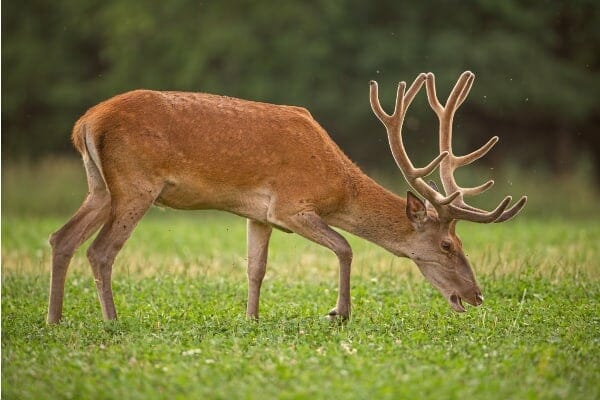
The origins of deer antler velvet as a supplement
The pedigree of deer antler velvet for medicinal use has been researched extensively by Dr. Subhuti Dharmananda, Director of the Institute for Traditional Medicine. He concludes:
“The story of deer antler can be traced back to the first Chinese Materia Medica, Shennong Bencao Jing (ca. 100 A.D.), where it is described briefly. There is also reference to earlier use of deer antler in an archeological find (a set of silk scrolls named Wushier Bingfang, from a tomb dated 168 B.C.).” ~ Dr. Subhuti Dharmananda
He states that it then fell out of favor until China’s Ming Dynasty period in the mid-16th century. Since that time it has been used by many cultures for its purported health benefits.(4)
In the ancient Chinese medical commentaries, deer antler velvet was referred to as Lurong and considered to be a strong yang tonic.(4) Ten Lectures on the Use of Medicinals from the Personal Experience of Jiao Shude provides these insights: Lurong tonifies kidney yang, strengthens sinew and bone, boosts sinew and marrow, and nourishes the blood.(4) The Advanced Textbook of Traditional Chinese Medicine and Pharmacology states Lurong is indicated for chronic diseases marked by general lassitude and spiritlessness, lumbago, cold limbs, and polyuria with clear urine, among other things.(4)
Extrapolating this to veterinary medicine, deer antler velvet may be appropriate for everything from senescence-related lethargy to immune modulation, although, like other entries in the Compendium of materia medica, contraindications may exist from a Traditional Chinese Veterinary Medicine (TCVM) standpoint.
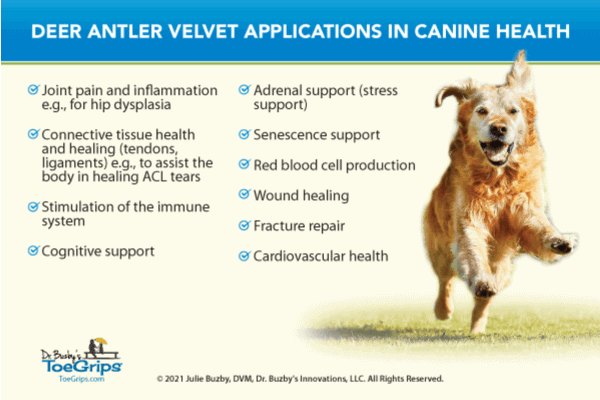
The unique properties of antler velvet as a nutraceutical
Members of the family Cervidae are the only animals with antlers, and the only mammals who fully regenerate organized tissue in an annual cycle.(15) Antler regeneration is a stem cell-based process.(16) Antler regeneration is carried out by cells—defined as stem cells—that normally develop the bony growth from the tip of the antler, and then from the cut part after antler removal.(25) Velvet antlers grow at a rate of up to 2 cm a day, completing the whole cycle from cell differentiation to mature antler development in just 90 days.(22)
The unique compounds that make this dynamic process possible are part of what makes deer antler velvet a unique and valuable ingredient in human and veterinary nutraceuticals.
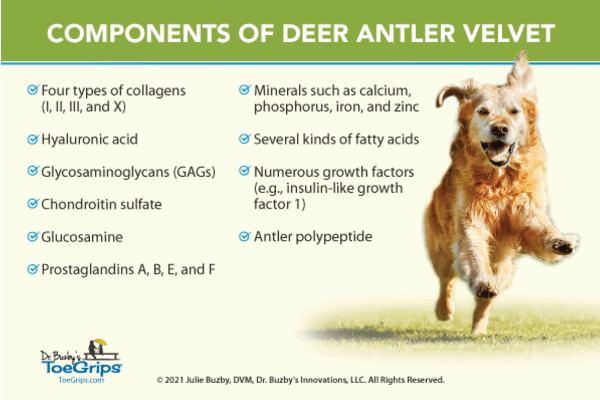
While velvet antler does contain fatty acids, glucosamine, and chondroitin sulfate, it is a relatively expensive ingredient in nutraceutical products and these components are often supplemented through other ingredients.
For this reason, velvet antler products on the market for pets typically feature this ingredient as a part of a proprietary blend or in combination with other active ingredients. For example, the author prefers to use a combination product with Green Lipped Mussel for dogs who are slowing down or have arthritic joints.
Practical, proven benefits of deer antler velvet
In 2013, a review of the literature and research on deer antler velvet from 1980 to 2012 was conducted for a paper in the Journal of Ethnopharmacology. The information was sourced from ancient Chinese herbal classics, pharmacopoeias, formularies, scientific journals, and books via hard copy and PubMed, Google Scholar, Web of Science, Science Direct, and CNKI (in Chinese).
The authors concluded:
“Both in vitro and in vivo pharmacological studies have demonstrated that deer antler base possess immunomodulatory, anti-cancer, anti-fatigue, anti-osteoporosis, anti-inflammatory, analgesic, anti-bacterial, anti-viral, anti-stress, anti oxidant, hypoglycemic, hematopoietic modulatory activities…”(18)
In several studies on the human side and in at least one study on dogs, velvet antler was determined to be of value for patients with osteoarthritis by providing both anti inflammatory effects and the building blocks useful for the health and healing of joints, muscle, and connective tissue.(17)
The beneficial anti-inflammatory effects of velvet antler were, in at least one study, hypothesized to be associated with pilose antler polypeptide and/or the action of pantocrin, an alcohol extract from velvet antler thought to have adaptogenic properties.(17)
Much of the research on antler velvet in recent years focuses on the unique function of antler polypeptides. Wang et al.’s research concluded that antler polypeptide promoted the proliferation and differentiation of bone marrow-derived mesenchymal stem cells, suggesting that antler polypeptides may be useful for promoting bone growth and regeneration.(23) Zhang et al.’s research suggested that pilose antler polypeptide may promote the proliferation of chondrocytes and osteoblasts.(24) And Xie et al. found in their study that velvet antler polypeptide could partially reverse lumbar disc osteophyte formation in mice and improve surface area coverage of facet joint cartilage.
Their research also demonstrated that velvet antler polypeptide could partially modulate extracellular matrix synthesis by inhibiting cartilage-degrading enzymes. This is relevant because articular cartilage contains extracellular matrix secreted by chondrocytes.(22)
The traditional use of antler to nourish the blood has been validated by recent studies which identified the active components responsible—monoacetyldiglycerides.(4) Monoacetyldiglycerides are small compounds that promote the production of blood cells by marrow stem cells.

One very recent in vivo study looked at the effects of methanol extracts (MEs)—a protein component—from deer antler velvet on nematode worms called Caenorhabditis elegans. While veterinarians are more often foes, not friends, to nematodes, some important conclusions can be extrapolated from this research because just like mammals, worms are susceptible to the toxic cellular effects of reactive oxygen species (ROS). In this study, Methanol extracts from deer antler velvet boosted oxidative stress resistance and extended the lifespan of the nematodes.
The safety rating of velvet antler
“Above all do no harm” is a guiding principle for every practitioner. Deer antler velvet has been shown to be nontoxic. In fact, in one study rats were fed a diet containing 10% elk velvet antler for three months, starting from birth. No negative effects were noted in health, growth, or development.(20)
In a separate study evaluating short and long term effects, rats were given a single mega dose of 2 g/kg deer antler velvet and then monitored for two weeks and given a 1 g/kg dose daily for 90 days. No adverse effects were noted on observation or necropsy.(21)
In terms of side effects from deer antler velvet as a nutraceutical ingredient, no negative side effects, including renal or hepatotoxicity, were noted in any of the studies cited in this paper. This is consistent with the author’s experience that deer antler velvet is safe to use and also to combine with other supplements and pharmaceuticals.
It should be noted that deer antler velvet is thought to be a potential source of transmissible spongiform encephalopathy (TSE) prions. Chronic wasting disease (CWD) is a contagious prion disease of deer and elk. Other TSEs familiar to veterinarians are BSE, bovine spongiform encephalopathy (mad cow disease), and scrapie in sheep. These are all progressive, fatal neurologic diseases.(9)
At least one study has identified chronic wasting disease (CWD) prions in the velvet of elk that were affected with the disease. Because humans are susceptible to several TSEs, including Creutzfeldt-Jakob disease (CJD), this research suggests that humans who consume deer antler velvet as a nutraceutical may be at risk for prion exposure.(10)
Members of the Felidae family, including domestic cats, have been shown to be susceptible to feline spongiform encephalopathy, another TSE, which leads to concern for the potential for cervid-to-feline transmission.(11) However, prion disease has never been described in dogs. In a recent paper evaluating why this is the case, the authors concluded that members of the Canidae family are resistant to prion infection based on a specific protein at position 163 of the canine cellular prion protein (PrPC )—a cell-surface glycoprotein—conferring genetic protection.
Reputable sourcing is essential for the responsible use of deer antler velvet in supplements for pets and humans.

Along with other countries, the United States and Canada have experienced outbreaks of CWD in wild and captive cervid herds.(14) CWD has never been reported in New Zealand and Australia.(13) This is one reason for the popularity of “New Zealand Deer Velvet” in nutraceuticals.
Conclusion
The only mention of deer antler velvet on the AVMA website is not a positive one: “Therapeutic benefits of velvet antler have not been well-demonstrated. A small amount of experimental research suggests potential use for improving joint function or wound healing; however, larger, independent trials have tended to produce negative results”(6).
However, integrative veterinarians are accustomed to “going off the grid.” Deer antler velvet is a 100% natural supplement with very unique properties. Its use in holistic health dates back at least twenty-three centuries, and in recent years, both in vitro and in vivo studies have demonstrated a long and impressive list of positive benefits, which (just like deer antler) is rapidly growing.
Save 10% on Encore Mobility™ Joint Supplement for Dogs

Give your dog more good days.
Use promo code HAPPY to save 10% on Encore Mobility.
Acknowledgment
The author would like to thank Subhuti Dharmananda, Ph.D., Director of the Institute for Traditional Medicine, for his contribution during various stages of research and editing of this article, and Doron Zur, B.V.Sc., M.R.C.V.S.
References
1.Tuckwell C. Velvet antler: a summary of the literature on health benefits. Australian Government Rural Industries and Development Corporation RIRDC Project No DIP-10A.
2. Velvet production. New Zealand Deer Velvet. https://www.velvet.org.nz/what-is-velvet/velvet-introduction/velvet-production velvet.org.nz.
3. Pierce II RA, Sumners J, Flynn E. Antler Development in White-tailed Deer: Implications for Management. White-tailed deer management. MU Extension and the Missouri Department of Conservation. extension.missouri.edu
4. Dharmananda S. Deer antler to nourish blood, bone, and joints, START Group Manuscripts. Institute for Traditional Medicine, Portland, OR. 2005.
5. Jiang C, Jin Y, Zhao X, Yuan U, Zhao Y, Huang L. Rapid and robust authentication of deer antler velvet product by fast PCR-RFLP analysis. Mitochondrial DNA A DNA Mapp Seq Anal. 2018; 29 (2): 266-272.
6. Welfare Implications of Deer Velvet. Literature Review. AVMA. June 29, 2009.
7. Antler Farms. How is Deer Antler Velvet Collected? Antlerfarms.com https://www.antlerfarms.com/our-deer-farms.htm.
8.NVSB. New Measures for Handling Velvet. May 2017. Deer Industry New Zealand deernz.org.
9. Bovine Spongiform Encephalopathy (BSE) Questions and Answers. FDA. 3/23/2018 fda.gov https://www.fda.gov/vaccines-blood-biologics/safety-availability-biologics/bovine-spongiform-encephalopathy-bse-questions-and-answers.
10. Angers RC, Seward TS, Napier D, et al. Chronic wasting disease prions in elk antler velvet. Emerg Infec Dis 2009; 15 (5): 696-703.
11. Mathiason CK, Nalls AA, Davis M, et al. Susceptibility of Domestic Cats to Chronic Wasting Disease. J Virol. 2013; 87(4):1947–1956.
12. Animal Health Status of Regions. Feb 5, 2021. APHIS. aphis.usda.gov https://www.aphis.usda.gov/aphis/ourfocus/animalhealth/animal-and-animal-product-import information/animal-health-status-of-regions.
13. World Health Animal Information Systems. WAHIS. Wild interface. https://www.oie.int/wahis_2/public/wahidwild.php/Diseaseinformation/Diseasesituation.
14. Chronic Wasting Disease. The center for food safety and public health. 2016. cfsph.iastate.edu.
15. Kierdorf U, Li C, Price JS. Improbable appendages: deer antler renewal as a unique case of mammalian regeneration. Seminars in Cell & Developmental Biology. 2009; 20(5): 535–542.
16. Sui Z, Zhang L, Huo Y, Zhang Y. Bioactive components of velvet antlers and their pharmacological properties. J. Pharm. Biomed. 2014; (87): 229-240.
17. Moreau M, Dupuis J, Bonneau NH, et al. Clinical evaluation of a powder of quality elk velvet antler for the treatment of osteoarthrosis in dogs. Can Vet J 2004; 45: 133-139.
18. Wu F, Li H, Jin L, et al. Deer antler base as a traditional Chinese medicine: a review of its traditional uses, chemistry and pharmacology. J Ethnopharmacol. 2013; 145(2): 403-415.
19. Haines SR, McCann MJ, Grosvenor AJ, Thomas A, Noble A , Clerens S. Deer velvet for dogs. ACE inhibitory peptides in standard and fermented deer velvet: an in silico and in vitro investigation. BMC Complement Altern Med. 2019; 19(1): 3-50.
20. Hemmings SJ, Song X. The effects of elk velvet antler consumption on the rat: development, behavior, toxicity and the activity of liver y-glutamyltranspeptidase. Comp. Biochem 2004; C138: 105-112.
21. Zhang H, Wanwimolruk S, Coville PF, et al. Toxicological evaluation of New Zealand deer velvet powder. Part 1: acute and subchronic oral toxicity studies in rats. Food Chem Tox. 2000; 38: 985-990.
22. Xie WQ, Zhao YJ, Li F, et al. Velvet antler polypeptide partially rescue facet joint osteoarthritis-like phenotype in adult β-catenin conditional activation mice. BMC Complement Altern Med. 2019;19(1):191.
23. Wang P, Sun T, Li G, Zhang H, Liu F, Gao Z, Cao S, et al.The Separation of Antler Polypeptide and Its Effects on the Proliferation and Osteogenetic Differentiation of Bone Marrow Mesenchymal Stem Cells. Evidence-Based Complementary and Alternative Medicine. 2020. vol. 2020.
24 Zhang L, Xin J, Zhang X, Fu Q, Zhang Y, and Zhou Q. The anti-osteoporotic effect of velvet antler polypeptides from cervus elaphus linnaeus in ovariectomized rats. Journal of Ethnopharmacology. 2013;150 (1): 181–186.
25. Wang D, Berg D, Ba H, et al. Deer antler stem cells are a novel type of cells that sustain full regeneration of a mammalian organ—deer antler. Cell Death Dis. 2019; 10: 443.

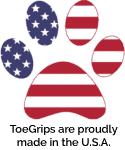
I met a motorcycle cop in gym years ago, he said he had been shot 6 times and off the bike etc. He took Deer Antler and never healed so fast. I remembered this and advised a neighbor of mine to take it and try it cuz what does he have to lose. He sent me a picture of bottom of his foot. He had a huge hole about 3-4 inches across and quarter inch deep, for eight months, while under doctors care. He had Diabetes. I said he may lose that foot cuz not healing at all. So I recommended Deer Antler supplements, not really knowing for sure what it would or could do?? He only took the lowest dosage of 250 mgs.capsules once daily, not twice as I suggested. Just three days later he sends me another picture of his foot again. It had almost completely healed,it did go down to size of dime or less. Miraculous healing in such short time. So..there is proof of super healing. How many professionals knew this?
Hi Michael,
This is so interesting! Unfortunately, most people just aren’t aware of the amazing power natural supplements have when it comes to wound healing and health. Thank you for sharing your experience with us. Keep up the good work!
My 13 year old lab takes 3-4 pills at one time, no issues. I wrap them in something (anything). We are a week in, and she seems to be showing improvement. Her back legs have given out after a lifetime of adventure. I’m looking forward to what seems to be a powerful ingredient (deer antler velvet) benefiting her.
Hi Christine,
It sounds like your girl has lived an amazing life! Hoping the deer antler velvet will give her many more happy days ahead to continue her adventures. Wishing you both nothing but the best. Anytime you have a chance, feel free to give us an update and let us know how things are going.
My Great Dane refuses the pills, they smell so bad. I’m using a little of peanut butter to cover the three pills she has to take. I read online that they should smell better.
Hi Orlando,
I am sorry your Dane is not fond of the smell of her medications. Which pills/medication is causing the problem? Here is a link to another article that may offer additional advice: Your Dog Won’t Take Pills? 5 Easy Solutions for Uncooperative Pooches